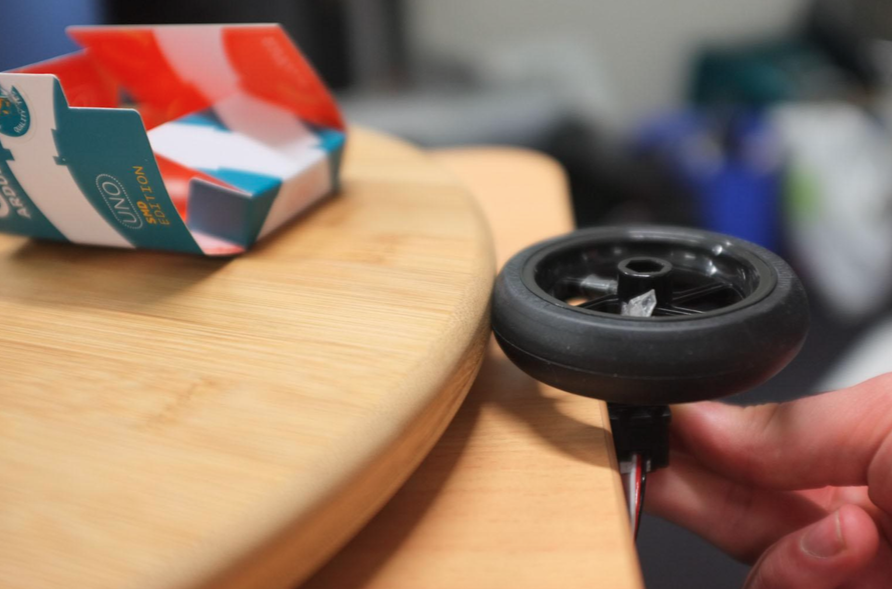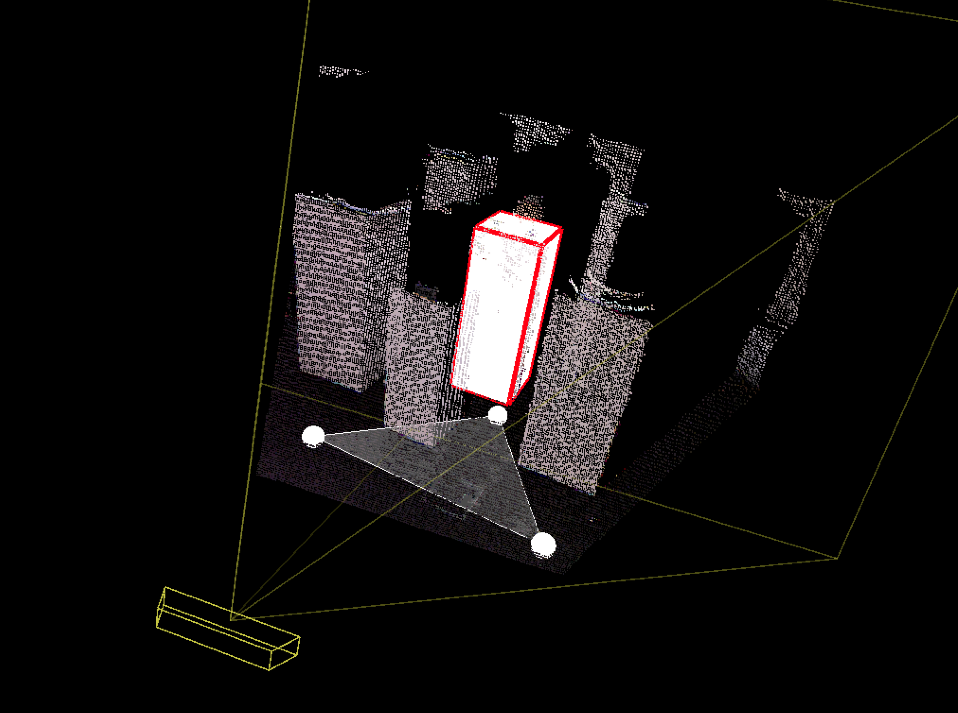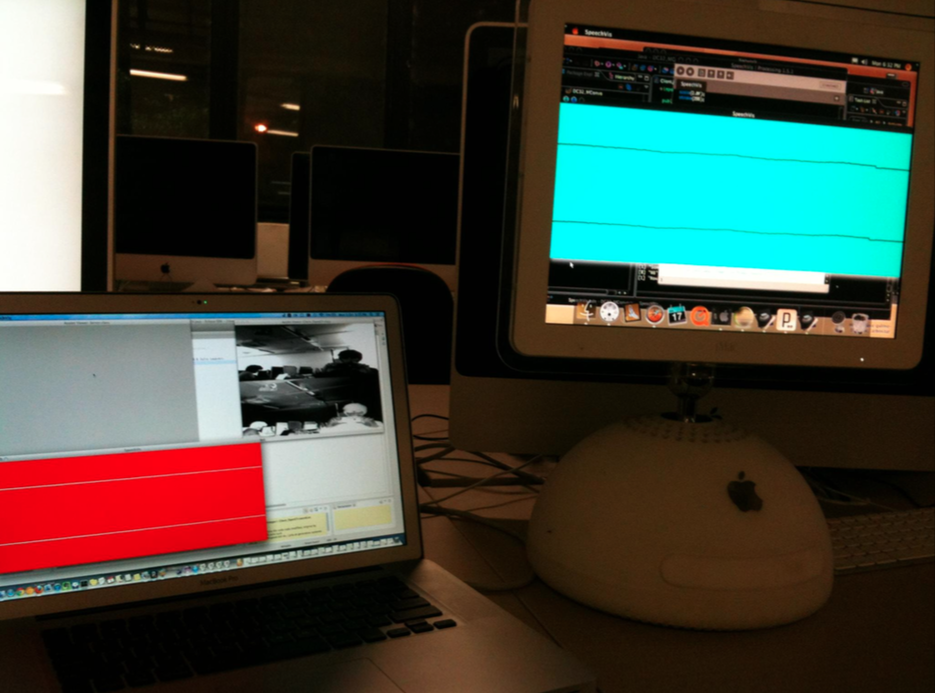Secret Lives of Computer Systems (DECO3200)

Secret Lives of Computer Systems was a seven-person hardware-based project for the course DECO3200 Human Computer Experience Design Studio, taught by Dr Oliver Bown.
Concept
‘Secret Lives’ is best described as:
A disparate network of computer systems casually converse. As a viewer approaches, the computers become curious, and address the viewer through different forms of communication: a robot hand; swivelling monitors; a webcam-as-eyeball, placing the viewer on-screen. The longer a viewer stays, the more agitated the computers become. Once all viewers move a distance away or turn their backs, the casual interaction between the computers resumes — it is clear that humans are not welcome in this space.
Process and Documentation

For the detailed final report 4, see here.
For the summary in pictures (presentation), see here.
There were various components to the project, these included:
- building the plinths
- visualising speech
- thermal printer development
- establishing a wireless arduino network
- detecting humans
- projection mapping
- coding the computer’s speech
- server and client networking setup and cabling
- webcams
- spinning lazy susans
- a robotic hand
- a morse code machine
- and finally the final setup

Role
Whilst everyone helped each other, we still had our primary roles.

I was primarily involved with the printer (video), networking, kinect + projection mapping, and most importantly; the spoken content of the computers (early video) (i.e. what they say and communicate with one another).

[Brief Process Blog during Reports 1 & 2]
Utilising different voices wasn’t much effort, it was moreso what the computers would say and how they’d say it. To figure that out, extensive theoretical research was done in creativity, artificial intelligence, and speech.
This all accumulated into the final work.
Team
Tom Dermott, Dale Hurwitz, Mark C Mitchell, Matt Norris, David Wallis, Hanley Weng, Adam Younis
Reflection
The group initially started off small with 2-3 of us and then quickly ballooned to seven of us. Because of the size, we decided to keep the project fairly modularised from the get go which helped a lot with what we could explore individually and reduced a lot of potential overhead. Everyone’s individual expertise was very beneficial to the project and helping out each other.
Whilst we were quite proud of our creation, it’s a shame that we didn’t really document the final work at launch.